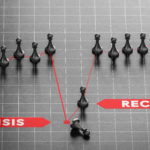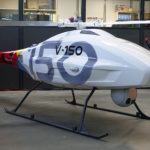ICEYE is continuing to set the pace for the Synthetic-Aperture Radar (SAR) market, with four additional satellites launches planned for 2020, and eight in 2021.
The Finnish manufacturer and satellite operator is the first organisation in the world to launch synthetic aperture radar satellites with a launch mass of under 100 kilogrammes. ICEYE has also announced the closing of a larger than planned $87M Series C funding in the last few weeks, led by return investor True Ventures, with a significant additional investment by OTB Ventures. ICEYE has successfully launched five satellite missions so far, starting with the first ever small SAR satellite launched in January 2018.
$152m financing raised
The company’s additional launches will grow the existing operational constellation into a unique capability. To date, ICEYE has raised a total of $152m in financing.
Rafal Modrzewski, CEO and Co-founder of ICEYE said: “ICEYE is enabling others to solve immeasurably difficult problems that affect the lives of millions of people around the world. Our team has built a reputation of delivering results to our customers with unmatched timelines and quality of service. We are proud of that reputation, and we intend to maintain it.”
“This round of investment ensures our SAR satellite constellation will reach a size of at least 12 satellites in 2021, guaranteeing four times a day revisit rate globally.”
Record real-time data deliveries
ICEYE designs, manufactures and operates its SAR satellites in-house, with manufacturing timelines brought down to months for its spacecraft. Since the successful January 2018 launch of the first ICEYE SAR satellite, the company has delivered SAR imaging services and new capabilities to global customers. These operations have included many world-first achievements for small SAR satellites, such as 0.25 meter resolution data and SAR video. Recently, ICEYE has demonstrated record time data deliveries of five minutes from the start of data downlink to having processed images available on customer systems.
ICEYE intends to use its next financing round to continue accelerating the growth of its SAR satellite constellation with more spacecraft, increasing data availability for all continents through 24/7 customer operations, continuing the development of ground-breaking radar imaging capabilities, and for establishing spacecraft manufacturing in the US. The financing round is significantly larger than originally planned, despite the economic turbulence year of 2020.
Given the unprecedented frequency and scale of climate driven changes in the weather, crop patterns, fires, urban living and human activities, ICEYE believes there is a critical immediate need for real-time information and data access on a global scale. This access can be used for saving lives during humanitarian and disaster response situations, and for economic decision making during moments of crisis.
ICEYE has provided commercial radar satellite imaging worldwide for several years, enabling ICEYE’s customers to respond to oil spills, hurricanes, deforestation and many more use cases. Along with these active customer imaging operations, the ICEYE SAR satellite constellation has seen an unprecedented development cycle of new imaging capabilities and new spacecraft generations.
Satellites are the “size of a small fridge”
Adam Niewiński, co-founder and Managing Partner of OTB Ventures, said: “We are pleased to be a cornerstone investor in the latest round of venture funding for ICEYE. We are thrilled to be part of the evolving ecosystem where even the sky is no longer the limit.”
Earlier this year, FINN caught up with Melanie Clift, ICEYE’s account director for the UK and the European Space Agency who explained the growing role of the commercial sector within space exploration and the advanced monitoring capabilities which were possible through the satellites.
She said: “What ICEYE has managed to do is to miniaturize the radar satellite radar spacecraft. So typically these satellites would be a tonne or two tonnes and you would need an anchor customer in the background, such as a government, to be able to afford to launch such a large satellite.”
“What ICEYE has done is they’ve miniaturised it to be sub 100 kilogrammes. So about the size of a small fridge. And what that means is the cost reduces and you can start to launch many more of these things. So what’s exciting is that instead of a constellation of two or four, you can start to afford to have a constellation of 10, 12, 14, up to 20, 24 or so. And that gives you frequency of revisit that you can come back and look at the same point on the earth again, and again multiple times a day, which hasn’t been possible before.”

